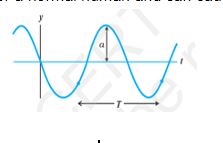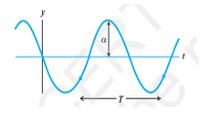
Vipra ShrivastavaSenior Manager - Content
What is the Frequency?
Frequency is the relation between the number of oscillations and waves per unit. Wave per unit is measured in Hertz (Hz). Pitch is directly proportional to the frequency. On average, people can hear sound having frequencies going between 20 – 20000 Hz. The inaudible sound has a frequency of less than 20 Hz, which a normal human cannot hear is called Infrasound. Ultrasound is the opposite of that; it has a frequency of over 20000 Hz, making it difficult to hear for a normal human and can cause ear damage.
What is Wavelength?
Wavelength is the distance between the two successive points or peaks. All points on a wave swing and create a change in the particular values of the wave exhibits. For example, when a person goes up and down while jumping the skipping rope, waves wiggle up and down, and molecules move repeatedly. When the distance between the two waves attains the successive peaks is called a wavelength. Lambda is used to describe the wavelength.
Relationship between Frequency and Wavelength
When the wave has a higher frequency on the rope than before, it means that the wavelength becomes shorter than it was in the beginning. It states that there is a relation between wavelength and frequency. Let us understand this concept in more detail.
The period that is used to describe a wave is (t). It shows the total time taken to complete one swing or oscillation. It can be represented as,
F = 1/t
Here, t is the period of a wave,
F is the frequency
Every point of the wave comes back to the same value after a single oscillation. This is determined by the one travel of the oscillation of a wavelength in one period. This can be written as,
V = λ/T
As we studied above, we know that the T = 1/f, so the equation can be written as,
V = f λ
Here, v is the speed of the wave,
This shows the relationship between frequency and wavelength.
Frequency and Wavelength for Class 12
As per the new pattern of 2021, the chapter 'Waves' holds a weightage of 5 marks in total. It includes two questions, one very short question consisting of 2 marks, and one short question of 3 marks bringing a total up to 5 marks.
Illustrated Examples
Example 1: Show the illustration of the frequency.
Solution: The illustration of the frequency is shown below:
Example 2: Write down the formula to calculate wavelength from frequency.
Solution: The formula to calculate the wavelength from frequency is as follows:
V = f λ
Example 3: State the wavelength of 1 Hz.
Solution: The wavelength of 1 Hz is equal to 340m.
Image Courtesy: NCERT
FAQs on Wavelength and Frequency
Q: What do you mean by frequency?
Q: What is the meaning of wavelength?
A: Wavelength is the distance between the two successive points or peaks. All points on a wave swing and create a change in the particular values of the wave exhibits.
Q: What is the colour of a shorter wavelength in the spectrum?
Q: What is the reason behind red light having the longest wavelength in the colour spectrum?
News & Updates
Physics Waves Exam
Student Forum
Popular Courses After 12th
Exams: BHU UET | KUK Entrance Exam | JMI Entrance Exam
Bachelor of Design in Animation (BDes)
Exams: UCEED | NIFT Entrance Exam | NID Entrance Exam
BA LLB (Bachelor of Arts + Bachelor of Laws)
Exams: CLAT | AILET | LSAT India
Bachelor of Journalism & Mass Communication (BJMC)
Exams: LUACMAT | SRMHCAT | GD Goenka Test

